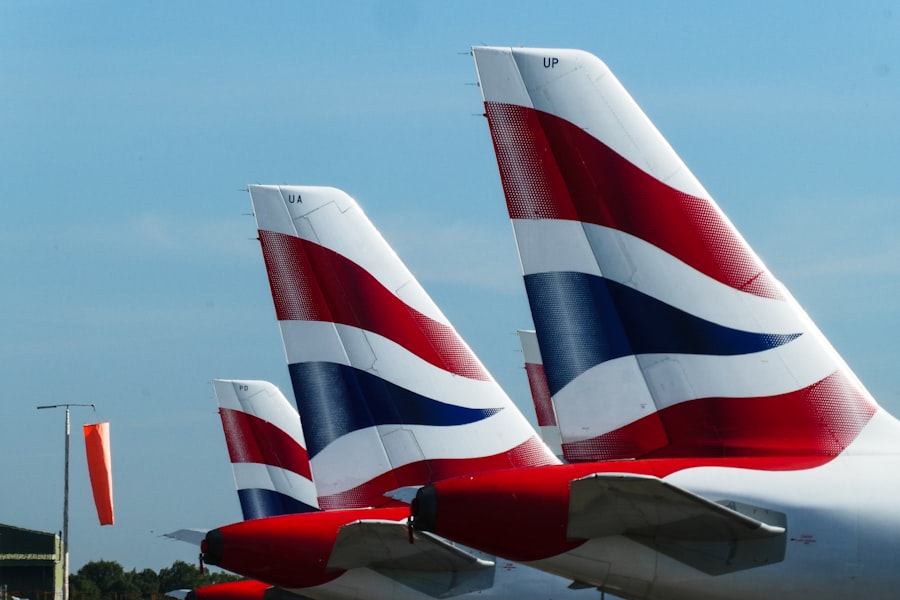
The field of aircraft assembly is a vital component of the aerospace industry, encompassing the intricate processes involved in constructing and maintaining aircraft. This sector not only plays a crucial role in the transportation of goods and people but also contributes significantly to national defense and technological advancement. Aircraft assemblers are the skilled professionals who bring together various components, ensuring that every part functions harmoniously to create a safe and efficient flying machine.
As air travel continues to grow, so does the demand for qualified individuals in this field, making it an attractive career option for those interested in aviation and engineering. Aircraft assembly careers are diverse, ranging from entry-level positions to specialized roles that require extensive training and experience. The work environment can vary significantly, with assemblers often found in manufacturing plants, repair stations, or even on the tarmac during aircraft maintenance.
The complexity of modern aircraft, which may include advanced materials and cutting-edge technology, means that assemblers must possess a solid understanding of engineering principles and mechanical systems. This article delves into the educational pathways, job responsibilities, and future prospects within the aircraft assembly industry, providing a comprehensive overview for those considering a career in this dynamic field.
Key Takeaways
- Aircraft assembly careers offer opportunities to work in a dynamic and growing industry with a variety of job roles.
- Education and training requirements for aircraft assembly typically include a high school diploma or equivalent, as well as on-the-job training or a formal apprenticeship program.
- Aircraft assemblers are responsible for assembling, fitting, and installing parts and components to build aircraft, as well as conducting quality inspections and ensuring compliance with safety regulations.
- The job outlook for aircraft assembly is expected to be stable, with a median annual wage of around ,000, and potential for advancement into supervisory or specialized roles.
- Advancement opportunities in aircraft assembly careers may include becoming a lead assembler, quality control inspector, or pursuing further education to become an aircraft mechanic or engineer.
Education and Training Requirements for Aircraft Assembly
To embark on a career in aircraft assembly, individuals typically need a combination of formal education and hands-on training. Most employers prefer candidates who have completed at least a high school diploma or equivalent. However, many positions require further education, such as an associate degree in aviation maintenance technology or a related field.
These programs often cover essential topics like aerodynamics, propulsion systems, and materials science, providing a solid foundation for aspiring aircraft assemblers. In addition to formal education, practical experience is crucial in this field. Many technical schools and community colleges offer programs that include internships or cooperative education opportunities, allowing students to gain real-world experience while still in school.
Furthermore, obtaining certifications from recognized organizations such as the Federal Aviation Administration (FAA) can enhance job prospects significantly. The FAA offers various certifications for aircraft maintenance technicians, which validate an individual’s skills and knowledge in specific areas of aircraft assembly and repair.
Job Duties and Responsibilities of Aircraft Assemblers

Aircraft assemblers are responsible for a wide range of tasks that ensure the proper construction and functionality of aircraft. Their primary duties include interpreting blueprints and technical drawings, assembling components according to specifications, and conducting quality control inspections throughout the assembly process. This meticulous attention to detail is essential, as even minor errors can lead to significant safety issues once the aircraft is operational.
In addition to assembly tasks, aircraft assemblers often collaborate with engineers and other technical staff to troubleshoot problems and implement solutions. They may also be involved in the installation of electrical systems, hydraulic systems, and avionics equipment. As technology continues to evolve, assemblers must stay updated on new materials and techniques used in aircraft manufacturing.
This ongoing learning process is vital for maintaining high standards of safety and efficiency in the industry.
Job Outlook and Salary Expectations in the Aircraft Assembly Industry
| Job Title | Median Salary | Job Outlook |
|---|---|---|
| Aircraft Assembler | 53,380 per year | 1% growth (slower than average) |
| Aircraft Structure, Surfaces, Rigging, and Systems Assembler | 56,980 per year | 1% growth (slower than average) |
| Aircraft Systems Assemblers, Precision | 56,980 per year | 1% growth (slower than average) |
The job outlook for aircraft assembly careers is promising, driven by the increasing demand for air travel and advancements in aerospace technology. According to the Bureau of Labor Statistics (BLS), employment for aircraft and avionics equipment mechanics and technicians is projected to grow by approximately 5% from 2021 to 2031. This growth is attributed to the need for skilled workers who can maintain and repair an aging fleet of aircraft as well as support new models being introduced into the market.
In terms of salary expectations, aircraft assemblers can anticipate competitive compensation that varies based on experience, location, and specific job responsibilities. As of May 2022, the median annual wage for aircraft and avionics equipment mechanics was around $66,000. Entry-level positions may start lower, while those with specialized skills or certifications can earn significantly more.
Additionally, many employers offer benefits such as health insurance, retirement plans, and opportunities for overtime pay, further enhancing the overall compensation package.
Advancement Opportunities in Aircraft Assembly Careers
Advancement opportunities within the aircraft assembly field are abundant for those who demonstrate skill and dedication. Entry-level assemblers can progress to more specialized roles such as lead assembler or team supervisor after gaining experience and additional training. These positions often come with increased responsibilities, including overseeing teams of assemblers and ensuring that projects are completed on time and within budget.
For those seeking further advancement, pursuing additional education or certifications can open doors to higher-level positions such as quality control inspector or project manager. Some individuals may choose to transition into related fields such as aerospace engineering or maintenance management, where their hands-on experience provides valuable insights into the design and operational aspects of aircraft. Continuous professional development is encouraged in this industry, with many employers supporting employees who seek further training or education.
Skills and Qualities Needed for Success in Aircraft Assembly

Success in aircraft assembly requires a unique blend of technical skills and personal qualities. Proficiency in reading blueprints and technical manuals is essential, as assemblers must accurately interpret complex diagrams to assemble components correctly. Mechanical aptitude is also crucial; individuals should have a strong understanding of how various systems work together within an aircraft.
In addition to technical skills, personal attributes such as attention to detail, problem-solving abilities, and effective communication are vital for success in this field. Aircraft assemblers often work as part of a team, necessitating strong interpersonal skills to collaborate effectively with colleagues from various disciplines. Furthermore, adaptability is important as technology evolves; assemblers must be willing to learn new techniques and embrace changes in manufacturing processes.
Challenges and Rewards of Working in Aircraft Assembly
Working in aircraft assembly presents both challenges and rewards that can significantly impact an individual’s career satisfaction. One of the primary challenges is the high level of precision required in assembling complex components. The consequences of errors can be severe, leading to safety risks that affect not only the aircraft but also passengers and crew members.
This pressure can be daunting for some individuals; however, it also fosters a strong sense of responsibility and pride in one’s work. On the rewarding side, being part of an industry that contributes to global connectivity and technological advancement can be incredibly fulfilling. Aircraft assemblers play a crucial role in ensuring that planes are safe and reliable for travel.
Additionally, the opportunity for career advancement and continuous learning keeps many professionals engaged and motivated. The camaraderie developed among team members working towards a common goal also adds to job satisfaction, creating a supportive work environment where individuals can thrive.
How to Find Aircraft Assembly Job Opportunities in the USA
Finding job opportunities in aircraft assembly requires a proactive approach combined with effective networking strategies. Job seekers can start by exploring online job boards specifically tailored to the aerospace industry, such as Aviation Job Search or AeroIndustryJobs.com. These platforms often feature listings from reputable companies looking for skilled assemblers.
Networking plays a crucial role in uncovering job opportunities that may not be advertised publicly. Attending industry conferences, trade shows, or local aviation events can help individuals connect with professionals already working in the field. Joining professional organizations such as the Aerospace Industries Association (AIA) or local aviation clubs can also provide valuable resources for job seekers.
Additionally, leveraging social media platforms like LinkedIn can enhance visibility among potential employers. Creating a professional profile that highlights relevant skills and experiences can attract recruiters looking for qualified candidates in aircraft assembly roles. Engaging with industry-related content on these platforms can further establish credibility and demonstrate commitment to professional development within the aerospace sector.



